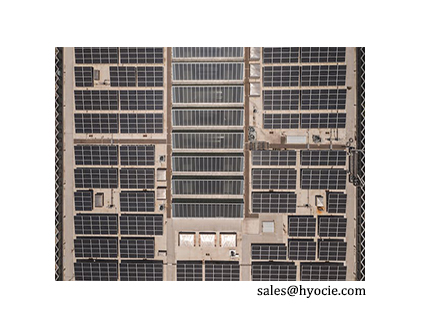Global photovoltaic trends in the next five years
Data from Wood Mackenzie, the world's leading business intelligence company, international energy macro research, show that from 2019 to 2023, the average annual growth rate of global photovoltaic installed capacity will be 28%, including an increase of 56% from 2022 to 2023. However, global photovoltaic installed capacity is not expected to grow between 2024 and 2028.
Although the total global photovoltaic installed capacity will maintain rapid growth in the next decade, its growth rate will begin to slow down in 2024 compared with recent years.
According to the head of Wood Mackenzie's global solar sector, if the previous estimate of total installed capacity in 2023 is accurate, then the average annual growth rate of photovoltaic installed capacity will reach 28% from 2019 to this year, with 2023 growing faster than 2022—an annual increase of 56%.
But generally speaking, the total global photovoltaic installed capacity will not show annual growth from 2024 to 2028, and there may be several years of shrinkage in these years. Wood Mackenzie predicts that global new photovoltaic installed capacity will reach 270GW this year, while the International Energy Agency (IEA) predicts that 349GW will be added in 2023.
The growth of the global photovoltaic market follows a typical S-curve. On the steepest part of the curve, growth has increased rapidly in recent years. Starting in 2024, the industry will experience an inflection point in which the growth model slows down. The global solar market is still many times larger than just a few years ago, but as the industry matures, it is natural to follow this growth path.
Not all areas are currently at the same point on the S-curve. For example, Africa and the Middle East are still a long way from reaching an inflection point in growth. However, globally, two major markets are driving this S-curve growth model, namely the Asia-Pacific region and Europe, dominated by China. It’s worth remembering that any changes in China will have a strong impact on global markets, as China leads the way in new capacity, with around 180GW due to be connected to the grid this year.
Factors that may influence this slowdown are global energy transition commitments. On December 13, at the United Nations COP28 climate conference in Dubai, governments around the world reached what was called a "historic declaration" and set goals for the transition away from fossil fuels for the first time. This goal sets the direction for the global energy system to shift. Oil, natural gas, and coal consumption continue to grow, albeit at a slower pace, with all three fuels reaching record highs in 2023. In addition, COP28 also agreed to triple renewable energy by 2030.
In 2023, global coal demand will grow by 1.4%, exceeding 8.5 billion tons for the first time. Consumption in the European Union and the United States is expected to grow by around 20%, while consumption in India and China will remain strong, with the growth of 8% and 5% respectively in 2023. However, by 2026, global coal consumption is expected to fall by 2.3% compared to 2023.
Renewable energy is also booming. Wood Mackenzie said global wind and solar production will be 55% higher in 2023 than in 2020.

